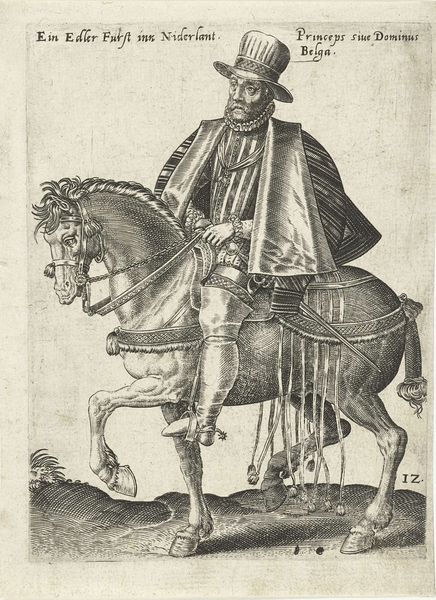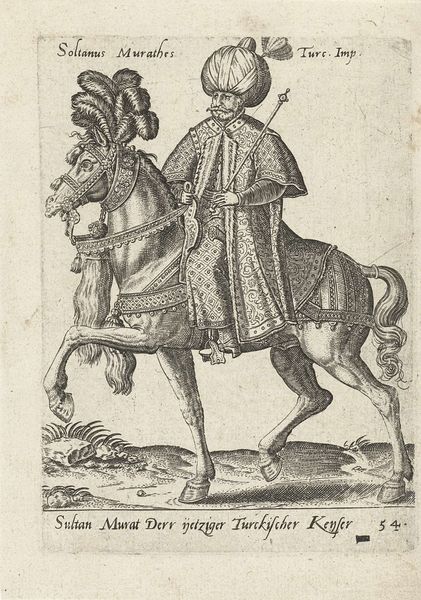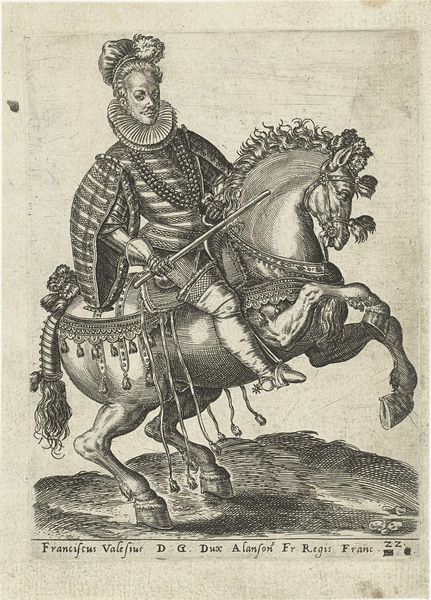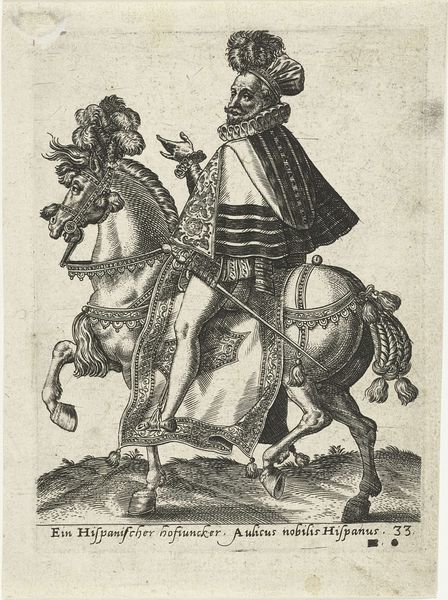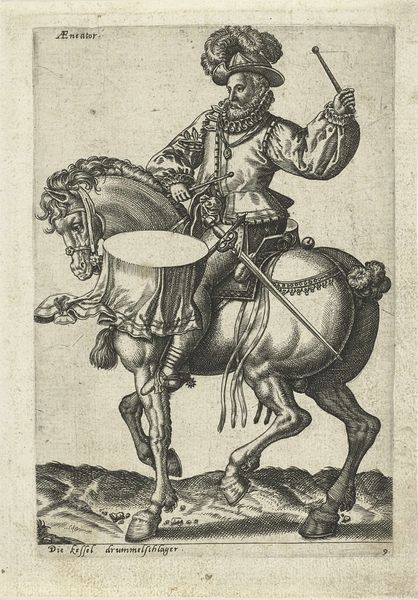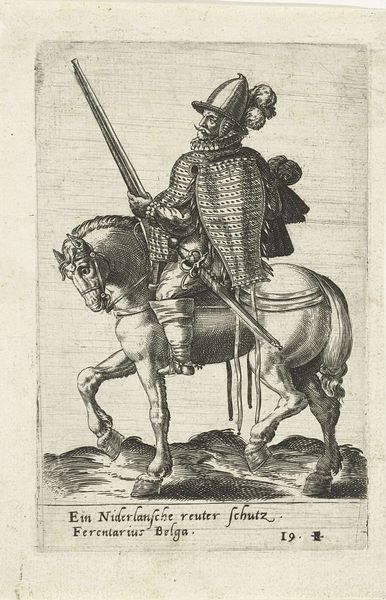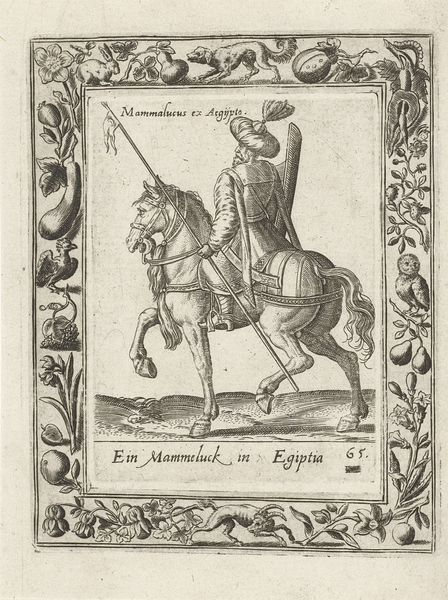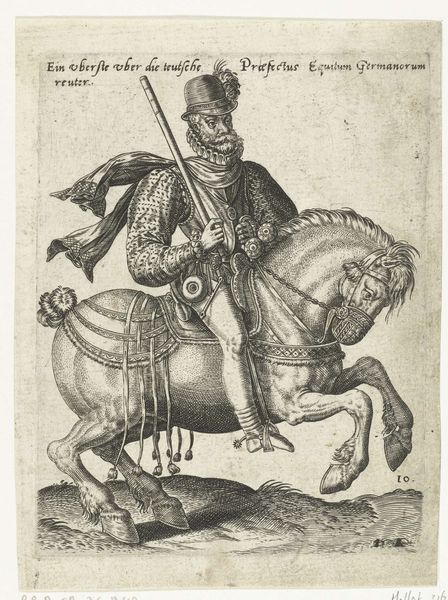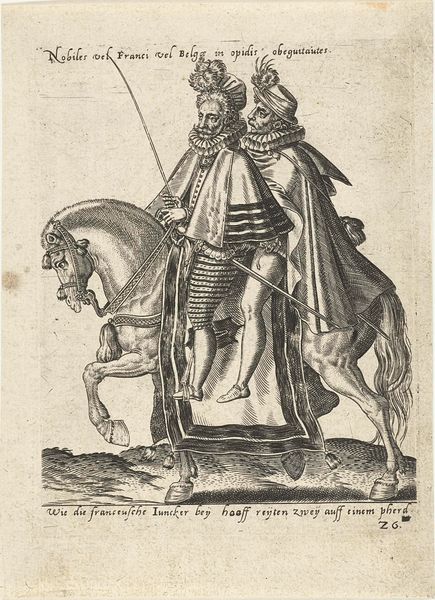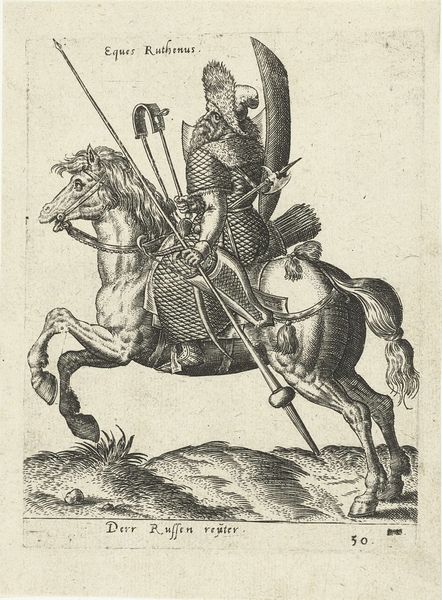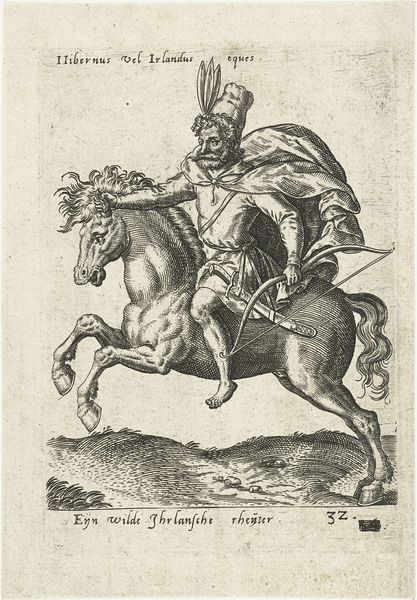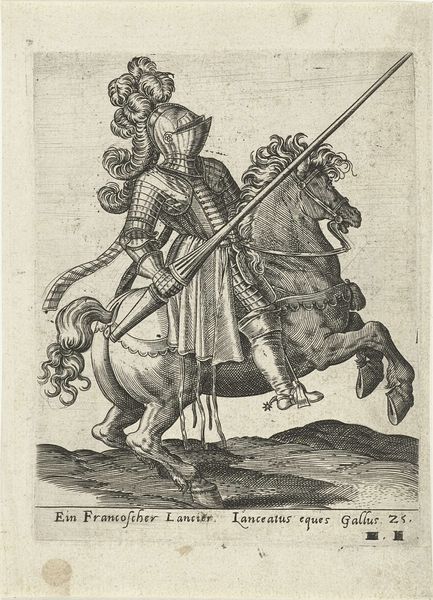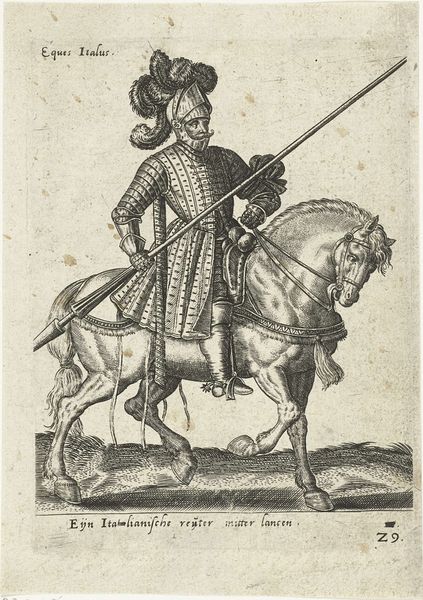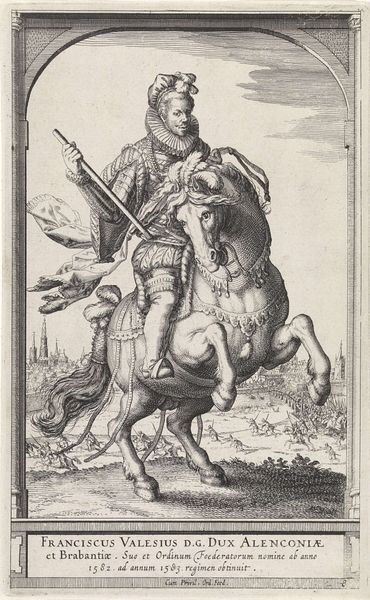
engraving
#
portrait
#
11_renaissance
#
history-painting
#
engraving
#
erotic-art
Dimensions: height 160 mm, width 120 mm
Copyright: Rijks Museum: Open Domain
Abraham de Bruyn made this engraving, "Nederlandse jonker te paard," using a metal plate, likely copper, and acid to bite the image into the surface. The fine lines are a direct result of the burin or etching needle precisely cutting into the metal. The density of these lines creates shading and texture, defining the jonker’s elaborate clothing and the horse’s musculature. This process, requiring immense skill and time, was crucial for disseminating images and information in the 16th century, acting almost as a printing press. Engravings like these weren't just aesthetic objects; they were products of a burgeoning industry, employing skilled artisans within a complex economic system. The jonker's attire and bearing reflect his status, which could be circulated and consumed by a wider audience through these prints. Considering the material and the making reveals the interplay between artistic skill, social status, and the early mechanisms of mass production.
Comments
No comments
Be the first to comment and join the conversation on the ultimate creative platform.
